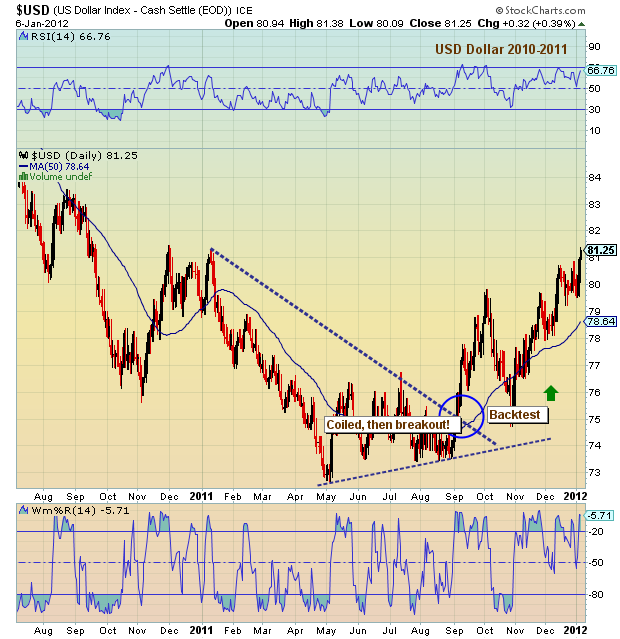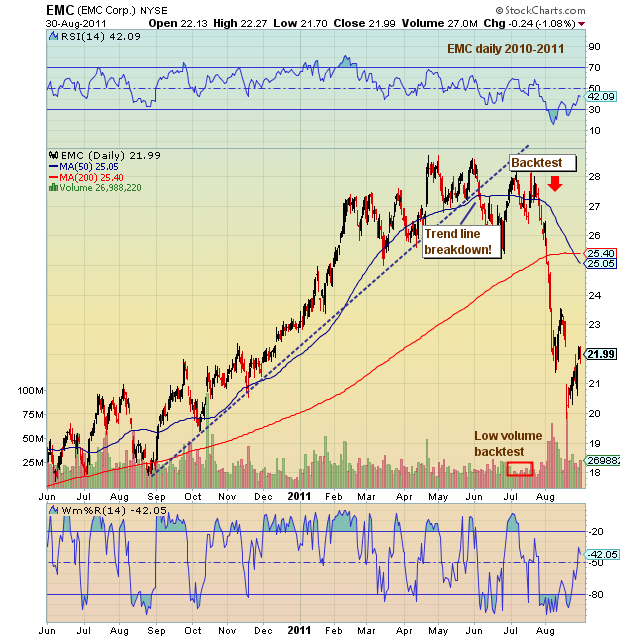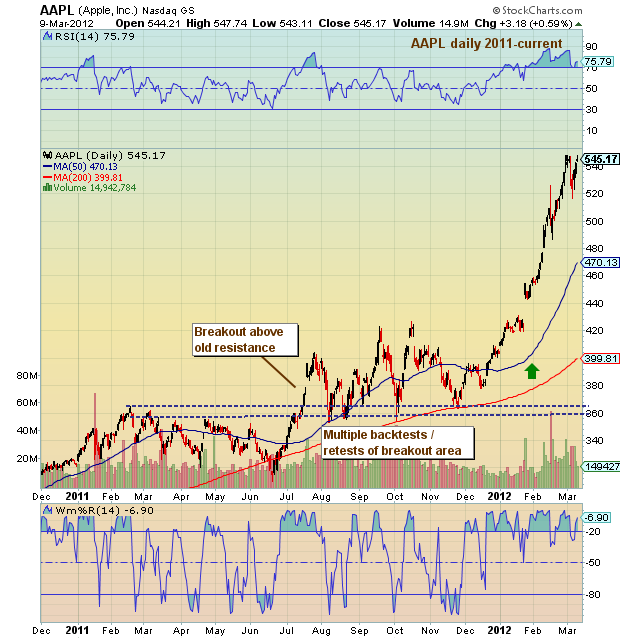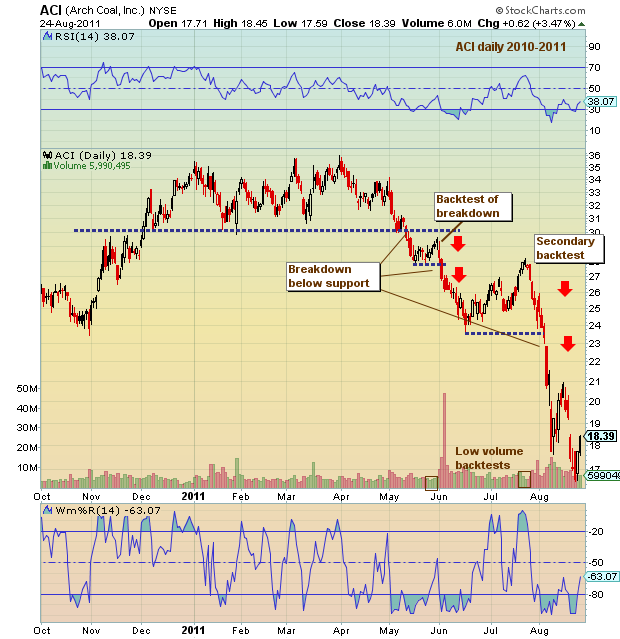 By Andrew Nyquist
By Andrew Nyquist
Simply put, a backtest occurs when a support or resistance area breaks and the price soon thereafter comes back to retest or validate that break. Many times the backtest falls short of the “break” area, as it is confirming what our technical eyes saw.
Backtests occur and can be used within any investing timeframe: 10 minute, hourly, daily, weekly, and monthly charts. Like all technical trading setups, there’s no guarantee with backtesting, but it does give investors another tool to assist in identifying good risk/reward setups. Note that low volume backtests tend to provide the best setups. And note as well that stops should be adjusted based on time frame and personal risk profile: short term trading (tighter), swing or longer term lens (looser).
Try this on for size: ABC stock breaks out above resistance at 75 and pushes to 80 before backtesting the breakout with a quick drop to 76.50 on low volume — A trader could buy ABC stock long on the backtest with a stop just below the breakout area near 75. This provides a good risk/reward trade with defined risk. Smart.
And conversely: ABC stock breaks down below support at 75 and pushes to 70 before backtesting the breakdown with a quick pop to 73.50 on low volume — A trader could short ABC stock on the backtest with a stop just above the breakdown area around 75. This provides a good risk/reward trade with defined risk. Again, smart.
Let’s look at a few older chart examples:
Downtrend breakout with backtest:
Uptrend breakdown with backtest:
Resistance breakout with backtest:
Support breakdown with backtest:
———————————————————
Your comments and emails are welcome. Readers can contact me directly at andrew@seeitmarket.com.
Twitter: @andrewnyquist and @seeitmarket Facebook: See It Market
No positions in mentioned securities.
Any opinions expressed herein are solely those of the author, and do not in any way represent the views or opinions of his employer or any other person or entity.












